Navigate to Sections
With its rich history, warm hospitality, and delectable cuisine, Morocco offers everything from pristine beaches to vast deserts, vibrant cities, and high mountains.
Morocco boasts unique cities, each with its own distinct color palette: Marrakech, the Red City; Fes, the Yellow City; Chefchaouen, the Blue City; and Tangier, the White City. Marrakech/Marrakesh is known for its bustling souks (markets) filled with vibrant colors, fragrant spices, and intricate crafts. Fez, where the echoes of Sufi mystics resonate through narrow alleys and historic landmarks. The Sufi trail, steeped in spiritual significance, leads you back to the 13th century, a time when seekers of wisdom and enlightenment left their mark on this soul-enriching city.
Along the Sufi trail, you can trace the Gold Route, an extension of the ancient Silk Road from Morocco to Timbuktu, the “city of gold.” Imagine retracing the steps of ancient caravans carrying silk, spices, salt, and precious metals across the Sahara Desert, establishing connections between Asian and North African civilizations. Close to the Sahara Desert, fossilized marble dating back to the Precambrian era, predating the existence of dinosaurs, can be found. Our Itinerary includes a glimpse of all the highlights mentioned above.
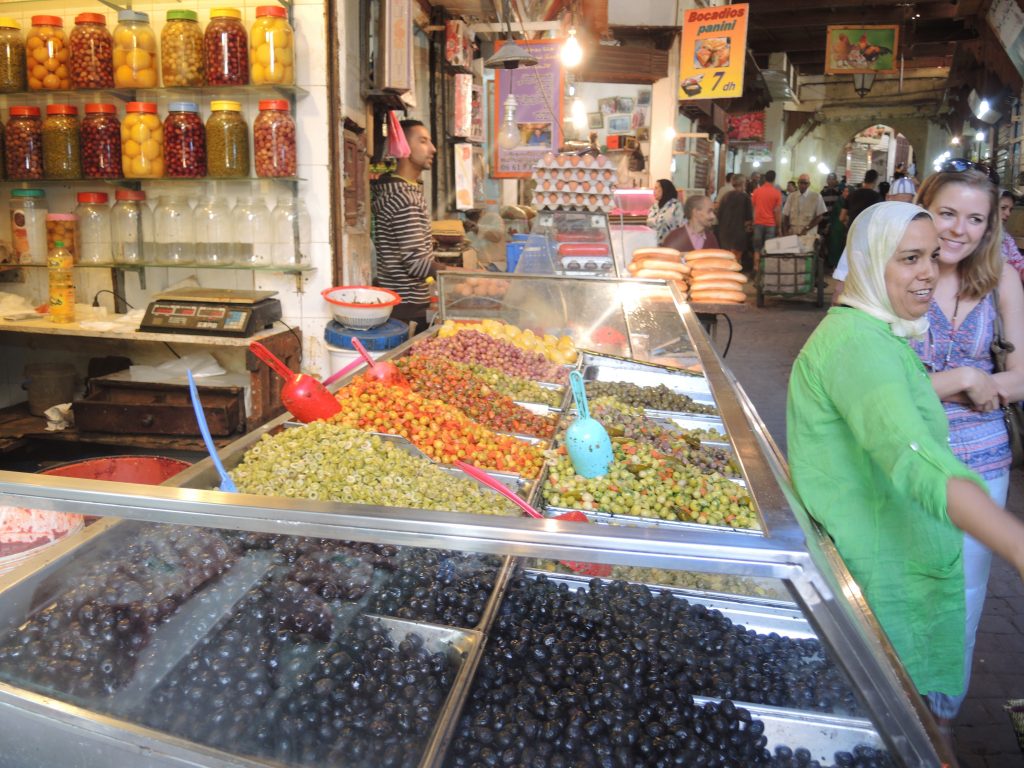
Marrakesh Souk
Our Two-Week Itinerary for Exploring Morocco: Day 1-14
This planned and tested two-week itinerary in Morocco includes visits to Marrakech, an overnight stay in the Sahara Desert dunes, and an exploration of Fez. It also includes suggested accommodations, transportation, day trips from Marrakech and Fez, visit to ancient Roman ruins, and trekking in the Mount Atlas region.
Please note, this itinerary does not include any coastal visits.
Day 1-6 Marrakesh
Accommodation: Many Riads, hostels, and Airbnbs are available in the older city of Marrakesh, close to the tourist attractions
Weather: It is hot and arid, with temperatures over 100F (40C) from May to September. We visited in September to avoid the tourist crowds.
Transportation: We didn’t rent transportation; instead, we explored the city on foot.
Exploring Marrakesh
Marrakesh is one of Morocco’s largest cities. It is a vibrant city pulsating with life and culture.
- Explore historic places such as Medina (an ancient walled city), including the famous Jemaa el-Fnaa square. Visit the Bahia Palace and Saadian Tombs.
- Wander through the palace’s ornate courtyards, gardens, and balconies decorated with intricate mosaic work.
- Walk through the vibrant souks (open markets, bazaar) and shop for traditional crafts.
- Relax in the Jardin Majorelle, a botanical garden in Marrakesh created by the French artist Jacques Majorelle over 40 years ago. It’s one of the most beautiful gardens in the country.
Note: It’s recommended that you hire a local tour guide who is knowledgeable about the history of the historical sites, architectural materials, and Style.
Day Trip: Atlas Mountains
Once you are in Marrakesh, taking a day trip to the Imlil in the Atlas Mountains is highly recommended. The village of Imlil, situated at an elevation of 8,000 feet (2,500 meters) near the base of Mount Toubkal, the highest peak in North Africa, is roughly a 90-minute drive from Marrakesh. The village is renowned for its picturesque landscapes and traditional Amazigh (Berber) culture. It is also a popular starting point for trekkers and hikers aiming to ascend Mount Toubkal and explore the surrounding mountain terrain. The region serves as a gateway to various treks that offer diverse experiences, ranging from day hikes to multi-day camping, through valleys, villages, and scenic vistas. We chose to do a day hike to explore the Ourika Valley and hike through Imlil for stunning views.
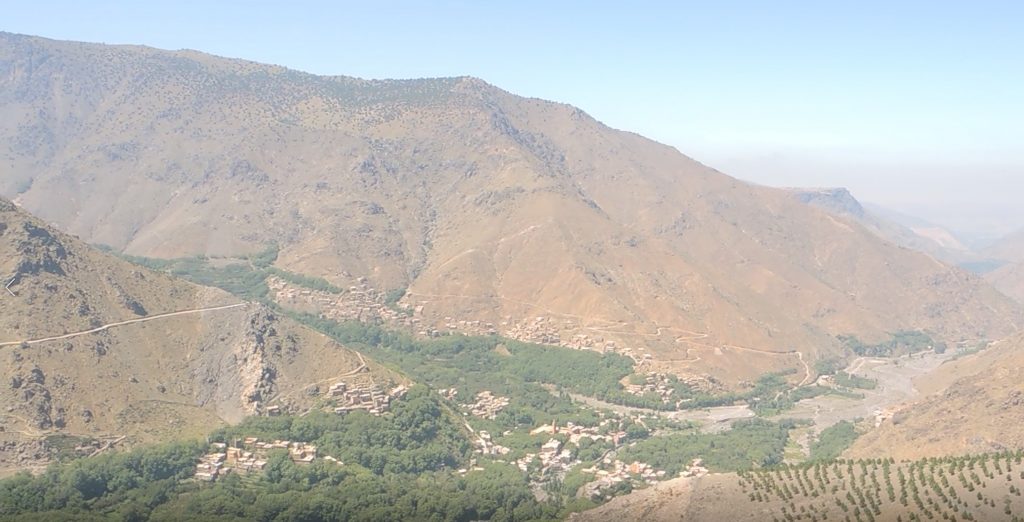
Imlil Trekking
The hike from Imlil is relatively easy and passes through diverse terrains, valleys, and villages. Along the way, we experienced authentic village life, including scenes of people washing clothes in the river in Imlil. This raw cultural experience will stay with you forever. Additionally, this day hike offers a serene nature escape from the bustling city of Marrakesh.
In this region, women wear long Spanish-style dresses instead of traditional Caftans, which we found particularly interesting.
Our guide stayed with us all day, explaining many aspects of Moroccan culture and history, including the Berber and Spanish influences. This comprehensive insight into the local traditions and lifestyle enriched our understanding and appreciation of the region. We returned to Marrakesh in the evening.
Day 7-9: Sahara Desert (Merzouga)
Explore the Moroccan desert with camels at Erg Chebbi
To reach the iconic fire-orange dunes of Erg Chebbi, we embarked on a two-day drive from Marrakesh, passing through mountains and desert before completing the final leg on a camel. But the whole adventure was worth doing, and that trip brings us vivid memories every time we think about Morocco.
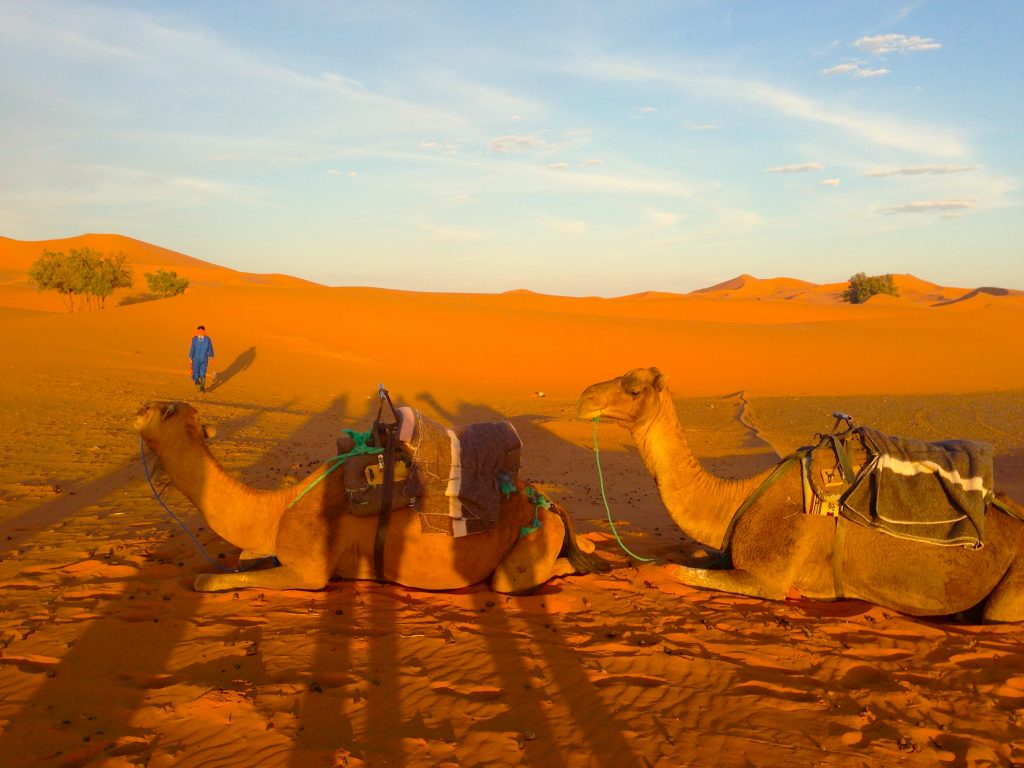
The dunes and Camels
Accommodation: One night in a hotel at Dadès Gorges and the other night inside the Desert.
Transportation: We rented a 4×4 SUV with a driver who was our guide.
Things to do
After checking out of our riad in Marrakech, we headed to Merzouga in the Sahara Desert. Along the way, we passed through the ancient village of Aït Benhaddou and the high-elevation mountain pass of Tizi n’Tichka.
Aït Benhaddou, Tizi n’Tichka, and Merzouga are located on the ancient trade route and hold significant historical importance. Collectively, these sites create a vivid image of the past in your mind.
The “Gold Route,” an extension of the Silk Road, facilitated the exchange of goods, including gold, between regions. This network connected the Mediterranean world with sub-Saharan Africa and was vital in trading valuable commodities such as gold, salt, ivory, and slaves.
Aït Benhaddou is an ancient ksar (fortified village) and a UNESCO World Heritage Site renowned for its pre-Saharan mud houses and walls. The clay earthen architecture was highly cost-effective due to the inexpensive mud used, which provided a cooling effect in the scorching heat of Africa thanks to its insulating properties. Once populated, Aït Benhaddou gradually became depopulated as the valley lost its significance as a financial trade route. The 2023 earthquake severely damaged the site. The vibrant, colorful street shops within the earthen mud houses sell handicrafts, mainly rugs, and paintings, creating an amazingly pleasing sight. A stroll through the area is highly recommended, where you can meet local Imazighs and experience their culture in a serene landscape that does not feel touristy or crowded.
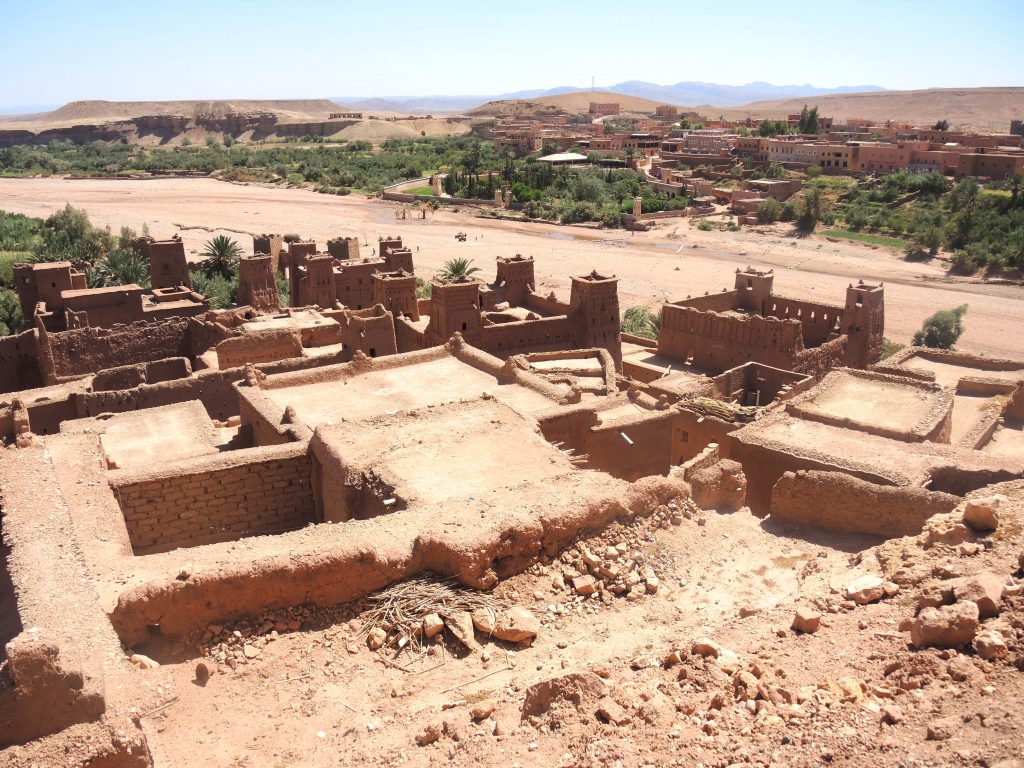
Ait Benhaddou, a Ksar in Ouarzazate
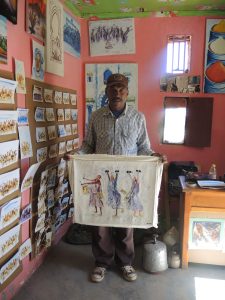
A painter selling his paintings near Kasbah Aït Benhaddou, Morocco
Another important attraction in the region is Tizi n’Tichka. This mountain pass was crucial to the ancient sub-Saharan trade route between Marrakech and Africa through the Sahara Desert. The pass, approximately 2,260 meters (7,415 feet) high, experiences snowfall from November to March. It is one of the highest passes in North Africa. The journey along the winding road leading to the pass is spectacular, although people who suffer from motion sickness may experience dizziness while traveling these roads. We stayed a night there in one of the Riads.
Day 8: Todra Gorge to Merzouga – Erg Chebbi
We traveled to Merzouga in the Sahara Desert the following day and passed through Todra Gorge. Todra Gorge is full of spectacular scenery, with dramatic red cliffs rising from the earth. The beautiful rock formations and red mud present a breathtaking sight, encouraging you to get out of the vehicle to admire and photograph the fantastic scenery.
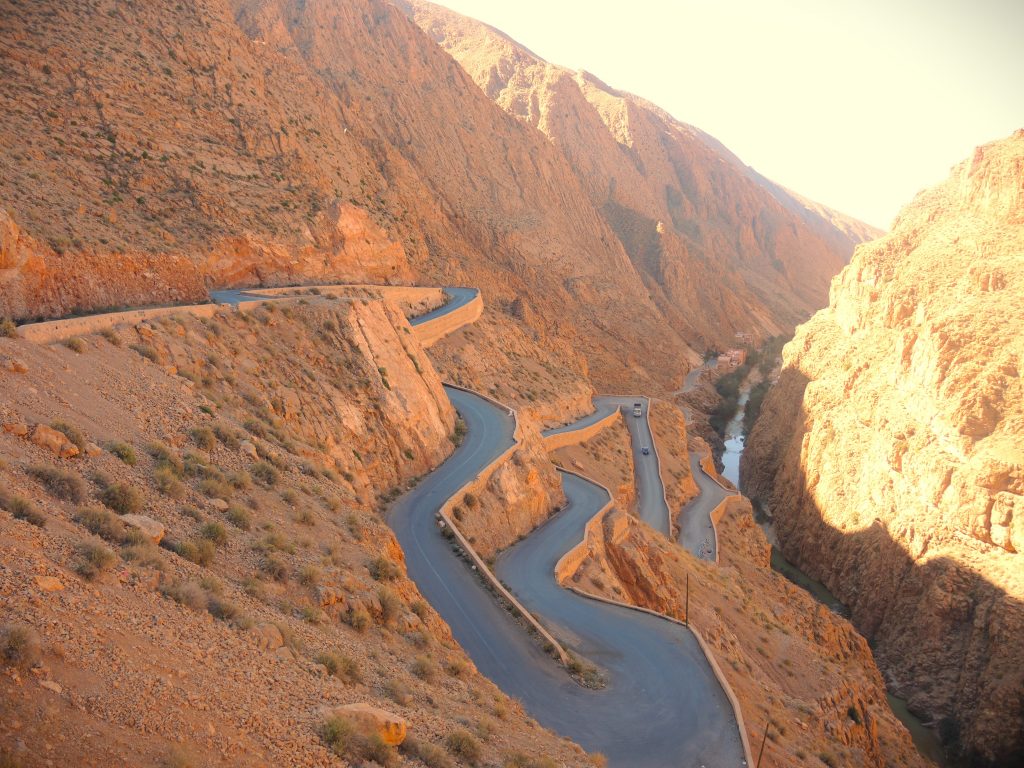
Todra Gorge Winding Mountain Road Dades Valley, Morocco
We finally reached a little town, Merzouga, in Erg Chebbi, one of many ergs(dunes) in the Sahara Desert. This is where our camel adventure begins. Our driver cum guide already booked that tour for us. That was our first camel trek into the dunes ever. We headed deep into the Sahara desert.
The Night Inside the Desert
We spent a night in a desert camp (the Mouhou camp), enjoyed the sunset and stargazing, and returned early in the morning to witness a spectacular sunrise. Optionally, you can explore nearby villages or take a 4×4 desert tour. You can find more about our travel experience in Merzouga and Erg Chebbi here.
Visiting Merzouga and experiencing the Sahara Desert is a once-in-a-lifetime adventure and one of the must-see destinations in Morocco. The desert is significant for seeing if you are a history lover, as it offers firsthand knowledge and experience of the hardships faced along the trans-Sahara trade route of that time.
Day 9: Return to Marrakesh via Erfoud
Since we left the desert before sunrise, we had plenty of time to explore the surrounding areas. Close to Erg Chebbi, there is a place called Erfoud. Erfoud, nestled in the Ziz Oasis near the renowned Erg Chebbi Desert, is a prime destination for geology and fossil enthusiasts. Morocco boasts the second-largest phosphate reserves globally, and its naturally purple amethyst is a well-known gemstone. We visited the Museum of Fossils, and local factories offer direct observation opportunities for those interested in fossil extraction. Imazighen families from Erfoud have been playing a significant role in mining and restoring fossils, utilizing hand tools for extraction. The extracted marble rocks are hand micro-blasted to reveal fossils, some of which are polished for display. In contrast, others are crafted into decorative household items such as sinks, fountains, soap dishes, countertops, and tabletops. See the detailed information here.
We rented a Riad and stayed for a night. The following day, we took a train to Fez or Fes.
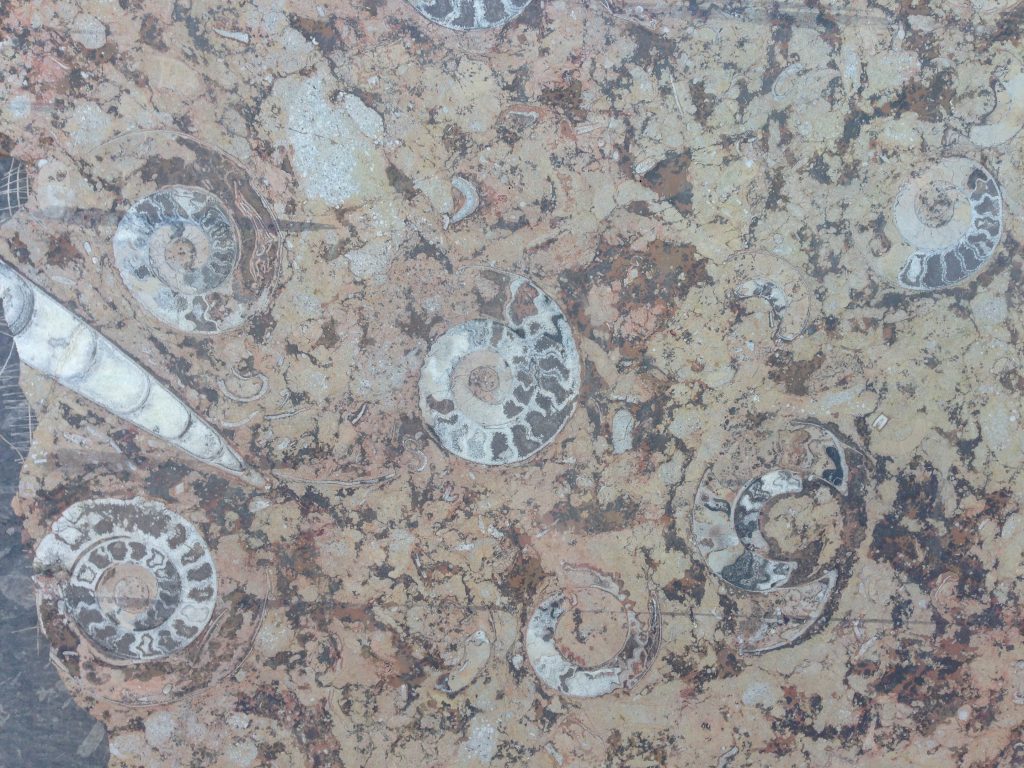
Fossilized Marble Slab After Being Polished
Day 10-14: Fez
Weather: For the best experience, consider visiting during the spring or fall when the weather is mild.
Accommodation: There are various accommodation options in Fez, ranging from budget-friendly hostels to mediocre and luxury riads.
Transportation: You can reach Fez by flying into Fes-Saïss Airport or taking the train from Marrakesh to Fez.
Things to do
You can take a tour or walk on foot to all the following attractions. Taking a tour is a cheap way of understanding the history associated with these sites.
Note: When visiting, it’s essential to respect the local customs and dress modestly; females cover their heads, especially when entering religious sites.
- Fez el-Bali (Medina): Fez’s old town, a UNESCO World Heritage Site, is a maze of alleys and streets. We explored lively markets, local artisans’ workshops, and ornate fountains. We learned a lot about the history behind those medinas and narrow alleys.
- Traditional Tanneries: Do not skip visiting tanneries in Fez. They have been operated for centuries since Medieval times, using methods passed down through generations. The colorful dye vats create a picturesque scene, but be warned—the strong odor from the tanning process can be overwhelming.
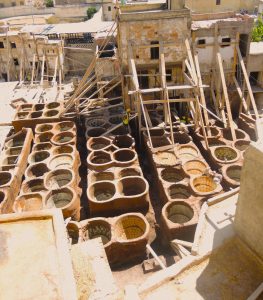
Tanneries in Fez
- Kairaouine Mosque and University: The most famous tourist attraction is Al-Karaouine University. Nestled within the medina is the Kairaouine Mosque, the second-largest mosque in Morocco. It is linked with the world’s oldest continuously operating university, the University of Al-Karaouine, which dates to the mid-9th century.
- Medersa Bou Inania: This historic Islamic college, a masterpiece of the Marinid dynasty, showcases exquisite Marinid architecture. As you step inside, you’ll be greeted by its beautifully adorned, awe-inspiring interiors.
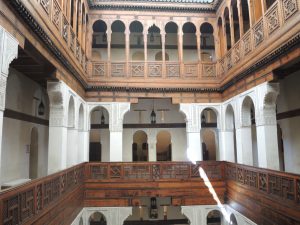
Funduq al-Najjarin- Museum
- Fez el-Jdid (Ville Nouvelle): Beyond the medina, the newer part of Fez, built by the French, contrasts with the old town, featuring wide boulevards, modern shops, and bustling traffic.
- Andalusian Quarter: Wander through the UNESCO-listed medina, its labyrinthine streets leading you to hidden gems. Here, the Jewish Quarter—the Mellah—holds stories of resilience. It was established when Jews expelled from Spain sought refuge in Morocco. Explore its narrow alleys, visit the old synagogue, and feel the echoes of history. Beyond the medina lies the Andalusian Quarter, where architecture reflects the influence of Andalusian Muslims who settled here centuries ago. Admire the intricate tilework and soak in the vibrant atmosphere.
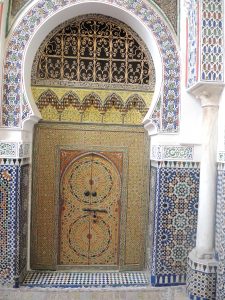
Check out the complete Fez walking tour guide here
Day Trip to Chefchaouen- The Azure Pearl City (A Must-See City)
It’s a good idea to plan your itinerary so that you visit Chefchaouen when you’re in Fez. Feel free to check out our blog post here for more information on why Chefchaouen is called the “blue city” and to delve into its rich history and culture.
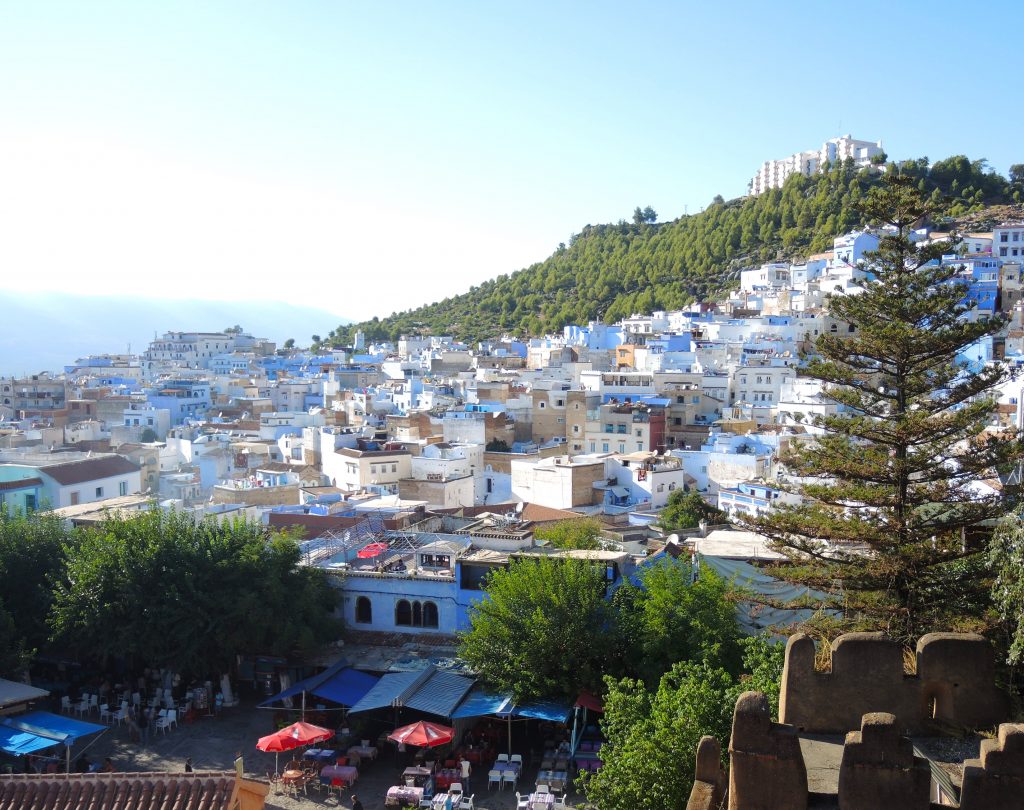
Chefchaouen, Morocco
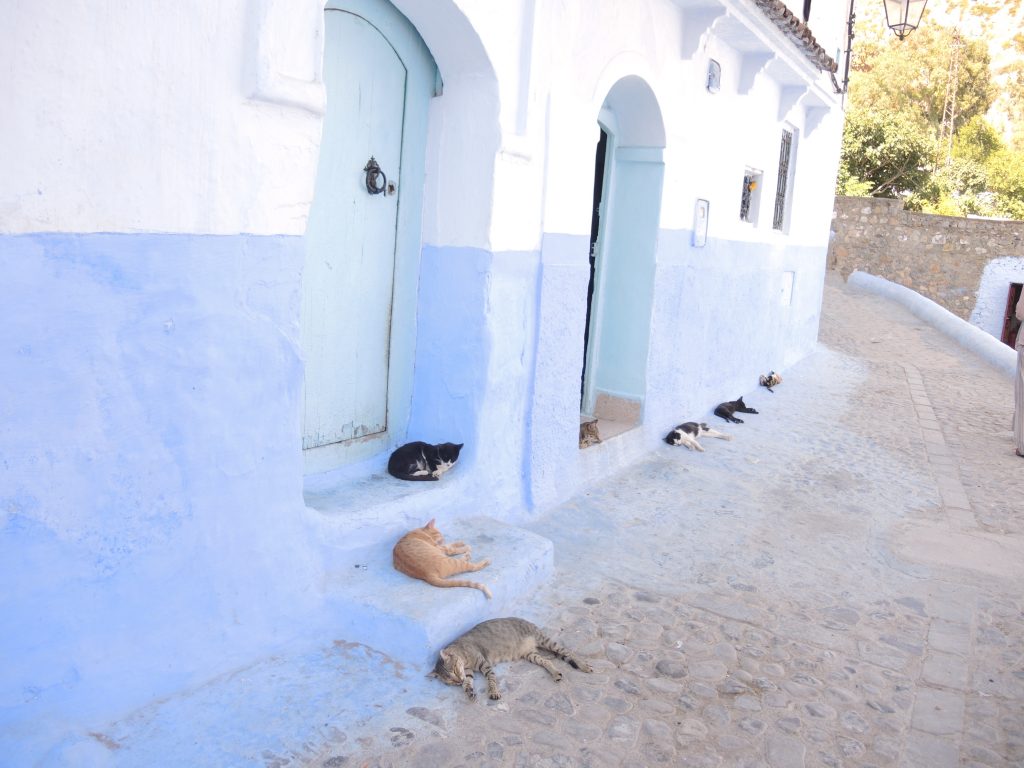
Cats are sitting on one of Chefchuan’s alleys
Day Trip to Ancient Roman Ruins- Volubilis (Optional)
When you are in Fez, consider a day trip to Volubilis’s nearby ancient Roman ruins to learn about ancient history and this part of the Roman Empire in North Africa.
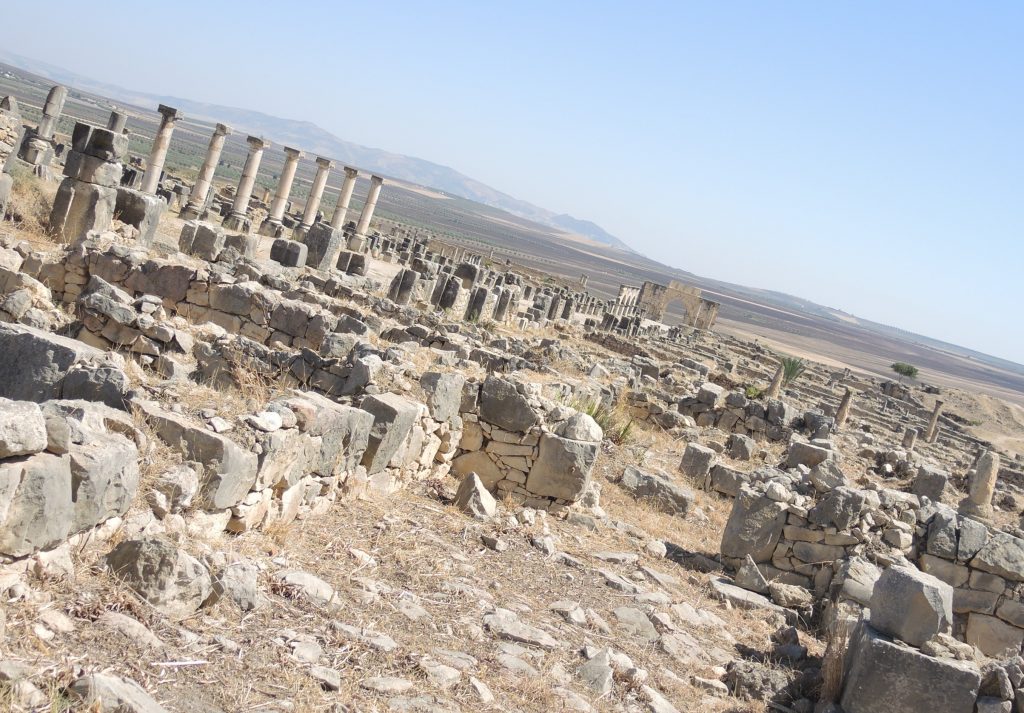
Volubilis- the Berber-Roman city in Morocco
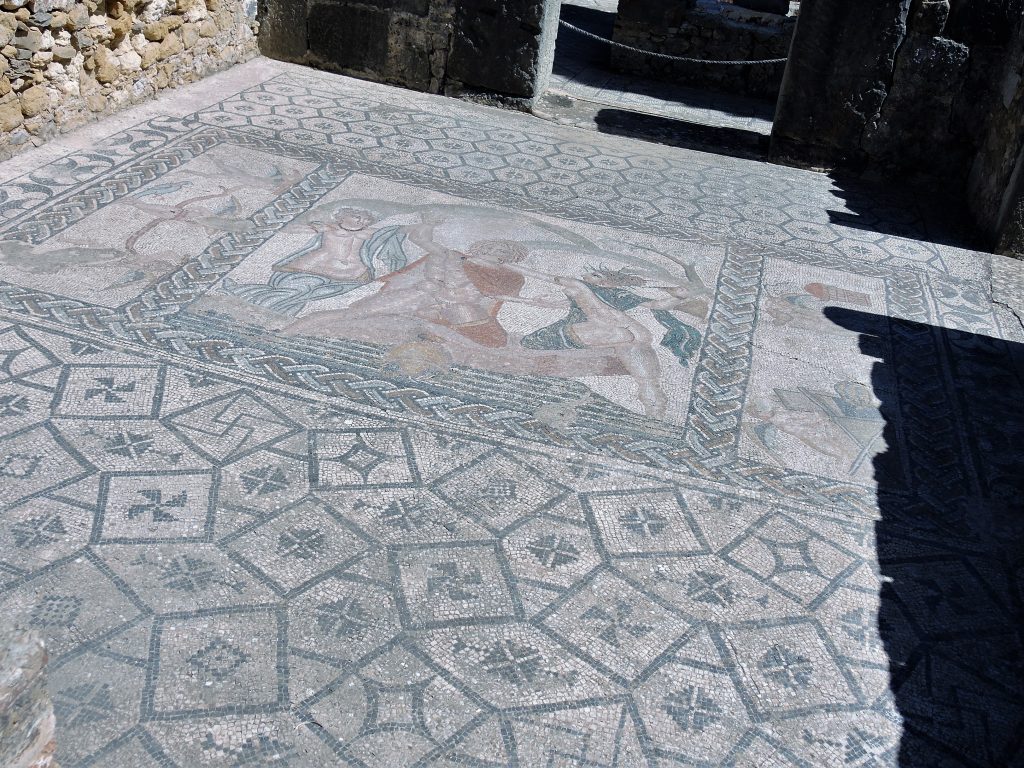
Impressive mosaic floor inside the Roman ruins
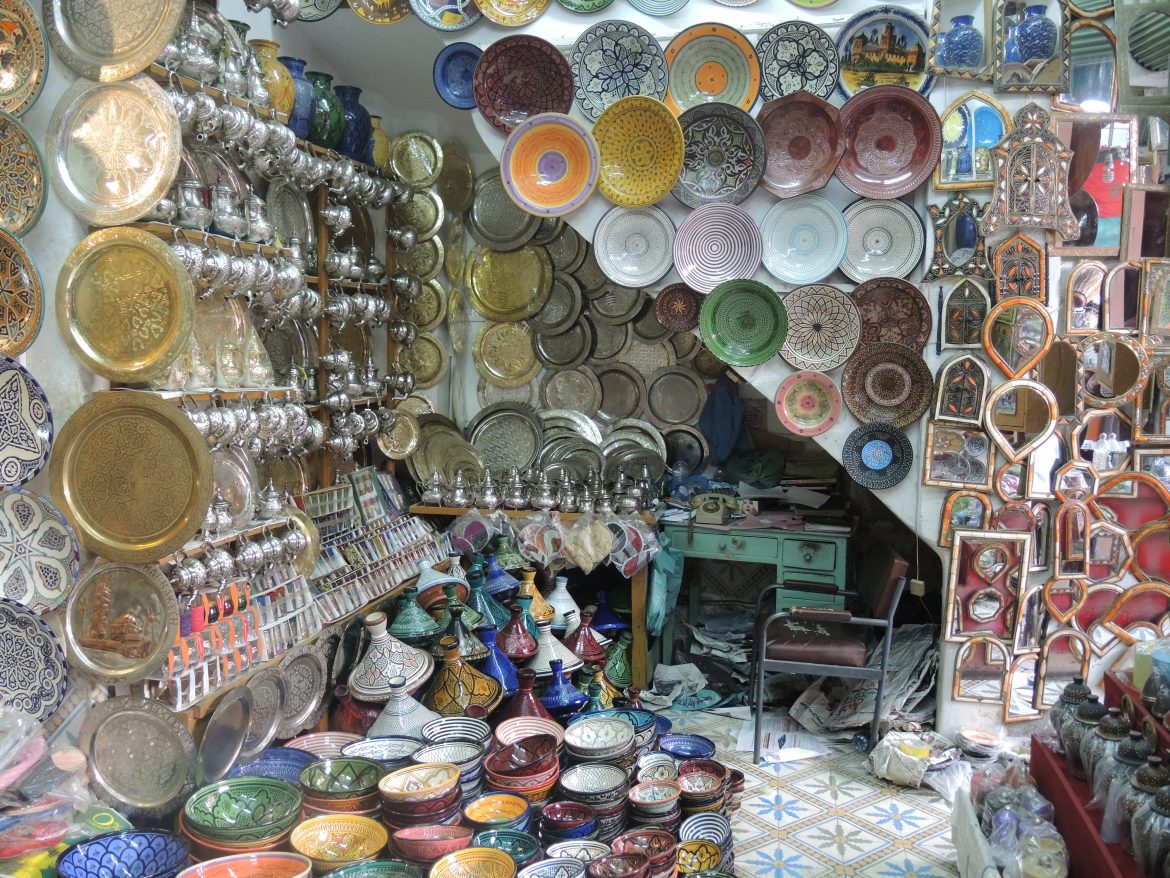
1 comment
Very interesting topic, regards for posting.